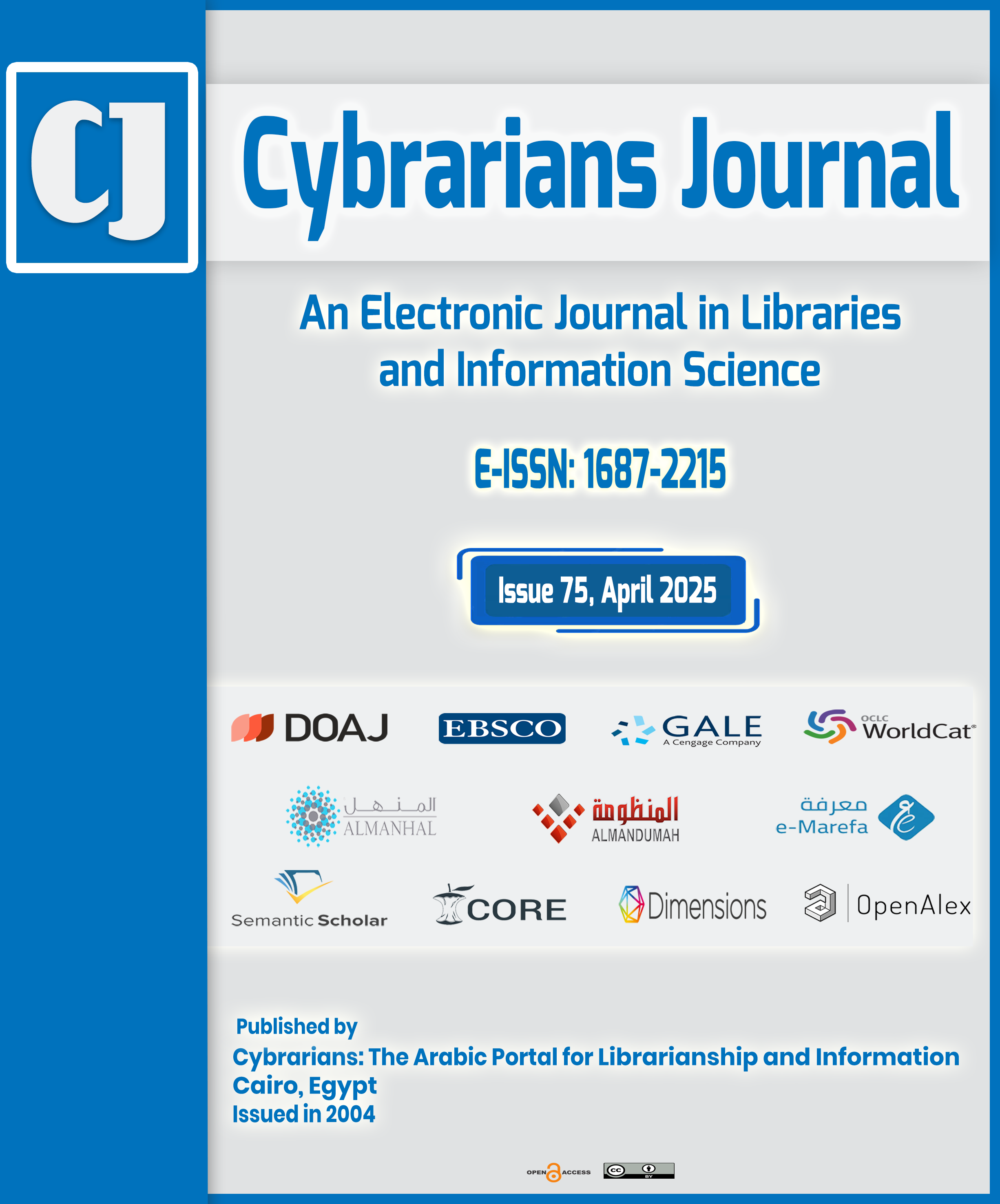Behind every stroke survivor: a bibliometric visualization of caregiver stress in rehabilitation
Keywords:
Stroke Rehabilitation, Caregiver Stress, Bibliometric analysisAbstract
Carers, frequently family members, are crucial to the recovery process after a stroke, which is a significant global health problem. Given that carers' health directly affects the degree of care provided to stroke survivors, understanding the challenges they confront is essential as the prevalence of stroke rises. It is believed that this research would enhance carer support, ultimately assisting stroke survivors.
This bibliometric study includes 48 articles on carer stress in stroke rehabilitation published between 2000 and 2022. The primary findings include a steady growth rate of 6.5% per year, underutilised current data with an average document age of 9.06 years and few average citations, significant author collaboration with few international partnerships, and a range of document formats. The dataset is split into four thematic groups: the general "Humans" theme, the focused "Family" theme, the specialised "Patient Discharge" niche, and the expanding "Inpatients" issue. These recommendations direct students towards specific areas of study. Visualisations that emphasise growth trends, document categories, important sources, and key affiliations provide insightful insights for enhancing carer aid and stroke recovery.
The findings of this bibliometric analysis of carer stress in stroke rehabilitation demonstrate a steady rise, recent but underutilised data, significant collaboration, a range of document types, and distinct theme orientations. Thematic grouping supports focused investigations. Finding essential sources and significant affiliations facilitates making informed decisions. This study advances our knowledge of carer stress and sets the road for more beneficial treatments for both carers and stroke victims.
References
Barakat, M. M., & Mostafa, H. A. (2020). Effect of psycho-educational program on psychological distress and post-traumatic stress disorder among stroke survivors’ patients. Evidence-Based Nursing Research, 2(2), 14.
Barbay, M., Diouf, M., Roussel, M., Godefroy, O., & GRECOGVASC study group. (2018). Systematic review and meta-analysis of prevalence in post-stroke neurocognitive disorders in hospital-based studies. Dementia and Geriatric Cognitive Disorders, 46(5–6), 322–334. https://doi.org/10.1159/000493378
Carmeli, E., Israely, S., Barel, H., Zalesov, O., Zaygraykin, N., Mansour, R., et al. (2023). Robotically driven error augmentation training enhances post‐stroke arm motor recovery. Engineering Reports, e12720. https://doi.org/10.1002/eng2.12720
Cohen, D. L., Roffe, C., Beavan, J., Blackett, B., Fairfield, C. A., Hamdy, S., et al. (2016). Post-stroke dysphagia: A review and design considerations for future trials. International Journal of Stroke, 11(4), 399–411. https://doi.org/10.1177/1747493016639057
Dymarek, R., Ptaszkowski, K., Ptaszkowska, L., Kowal, M., Sopel, M., Taradaj, J., et al. (2020). Shock waves as a treatment modality for spasticity reduction and recovery improvement in post-stroke adults – Current evidence and qualitative systematic review. Clinical Interventions in Aging, 15, 9–28. https://doi.org/10.2147/CIA.S226099
Gao, Z., Wang, Y., & Yu, H. (2022). A Chinese classical prescription Chaihu Shugan Powder in treatment of post-stroke depression: An overview. Medicina, 59(1), 55. https://doi.org/10.3390/medicina59010055
Gebreheat, G., Goman, A., & Porter-Armstrong, A. (2023). The use of home-based digital technology to support post-stroke upper limb rehabilitation: A scoping review. Clinical Rehabilitation. Advance online publication. https://doi.org/10.1177/02692155231189257
Kootker, J. A., Van Heugten, C. M., Kral, B., Rasquin, S. M., Geurts, A. C., & Fasotti, L. (2019). Caregivers’ effects of augmented cognitive-behavioural therapy for post-stroke depressive symptoms in patients: Secondary analyses to a randomized controlled trial. Clinical Rehabilitation, 33(6), 1056–1065. https://doi.org/10.1177/0269215519830413
Li, C., Shu, X., & Liu, X. (2022). Research hotspots and frontiers in post stroke pain: A bibliometric analysis study. Frontiers in Molecular Neuroscience, 15, 905679. https://doi.org/10.3389/fnmol.2022.905679
Li, X., Yu, J., & Shu, C. (2022). Bibliometric analysis of global research trends on post-stroke pneumonia: Current development status and research frontiers. Frontiers in Public Health, 10, 950859. https://doi.org/10.3389/fpubh.2022.950859
Nakhostin Ansari, N., Bahramnezhad, F., Anastasio, A. T., Hassanzadeh, G., & Shariat, A. (2023). Telestroke: A novel approach for post-stroke rehabilitation. Brain Sciences, 13(8), 1186. https://doi.org/10.3390/brainsci13081186
Quintana, D., Rodríguez, A., & Boada, I. (2023). Limitations and solutions of low-cost virtual reality mirror therapy for post-stroke patients. Scientific Reports, 13(1), 14780. https://doi.org/10.1038/s41598-023-42012-1
Tatiana, B., Maria, V., Cristina, C., & Diana, M. (n.d.). The efficacy of gabapentin therapy in persistent post-stroke hiccups: Clinical case. (Journal name and publication details needed.)
Xu, M., Gao, Y., Zhang, H., Zhang, B., Lyu, T., Tan, Z., et al. (2022). Modulations of static and dynamic functional connectivity among brain networks by electroacupuncture in post-stroke aphasia. Frontiers in Neurology, 13, 956931. https://doi.org/10.3389/fneur.2022.956931
Downloads
Published
How to Cite
Issue
Section
License
Copyright (c) 2025 Bidhan Dolai, Avradeep Bose, Hriddhiman Basu, Sayan Roy

This work is licensed under a Creative Commons Attribution 4.0 International License.







